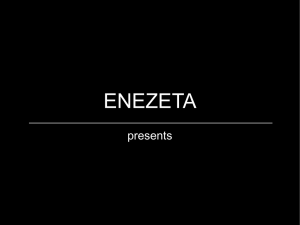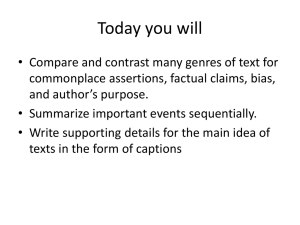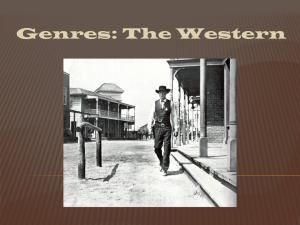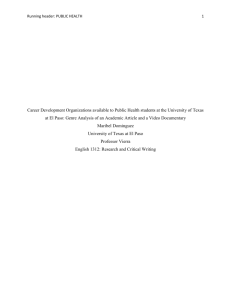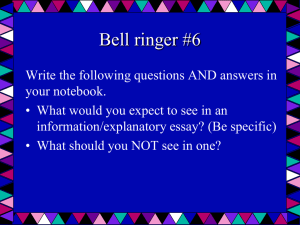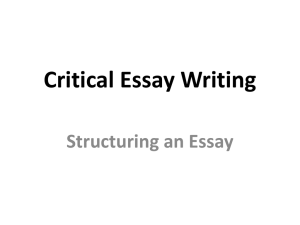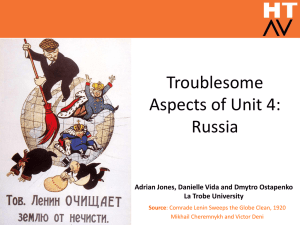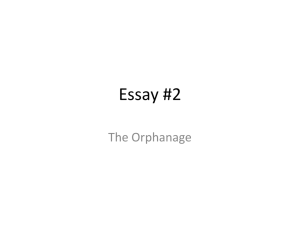Documentary Genre - The Essay
advertisement
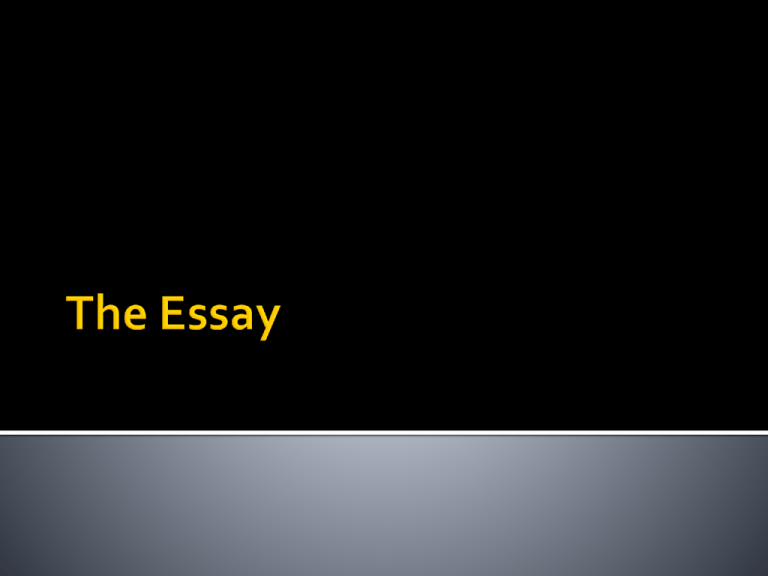
AS90599 Demonstrate understanding of a specific media industry (4 credits). AS90602 Explain the relationship between a media genre and society (4 credits). Respond to one of three statements. Support your answer with specific evidence (AS90602 = from at least three texts). Societies’ tastes and/or values shape genre. Genre can inform and/or influence society. Genre can play on the fears and/or desires of society. “A description of at least one recognisable characteristic of your chosen genre.” The conventions of documentary film that we now know so well. Montage, interview, diagetic/ non-diagetic music, vox pops, voiceover, archival footage. “Perceptive analysis of at least two aspects of the relationship between media genre and society.” For example, the technological constraints faced by Flaherty in filming Nanook were a product of society at the time; as was the mildly racist attitude with which he viewed his subject. Gimme Shelter described, and therefore was part of, the end of the 1960’s social dream of free love and happiness. “Reference to at least three specific media texts.” Quotes, descriptions, shots or scenes from any of our viewing. Nanook, Gimme Shelter, Bowling for Columbine, Donated to Science, Chasing the Ghost, Style Wars. Working with a partner, choose an essay question. Brainstorm: 1. Characteristics (conventions) you could discuss (3+) 2. Aspects of the relationship between the genre and society (2-3 ideally). 3. Media texts (I would expect to see 5 specific examples in a 301 essay, especially one aiming for Merit/Excellence). “Tastes and values” How are attitudes formed from viewing documentary film? Esp Nanook, Bowling for Columbine. “Inform and/or influence” – how does documentary film inform or influence audience perceptions? How does the audience perceive the USA after watching Bowling for Columbine? The Inuit after watching Nanook? The Rolling Stones (or the 1960’s) after watching Gimme Shelter? Medical science after watching Donated to Science? Once you have completed your essay plan, work independently on writing it – aim for 3-4 main points, based around specific evidence you aim to include. Next Monday, we will compare finished essays with our partners, and work to develop a “model answer”. Stuck? Check the Wiki for a model essay referring specifically to our studied films. Compare progress with your partner. You should look at: The examples used. The planned structure of the essay. The conventions discussed. 1. 2. 3. 4. Choosing a question – Join the questions group to discuss options. Not sure what to write about – look on the wiki for the exemplar essay. Brainstorming details for your essay – use your notes, the wiki, work with a partner, to collect relevant details. Planning the structure of your essay – see Mr. Hanson to discuss. 1. Goal for this period: move yourself forward at least one stage. Tutorial Wed 12.50-1.50 is an essay tutorial. If you haven’t handed an essay to me to mark, I will expect to see you on Wednesday, when you can hand in a completed essay. Reminder: 3.2 Tasks 1 and 2 Due at the beginning of the period on Friday. A hard copy (on paper) is required. Write yourself focus question(s). Eg for the inform/influence question: To what extent does the documentary genre inform society accurately? What are the reasons for this (in)accuracy? Re-word this question in your introduction, conclusion, and use each body paragraph to ‘answer’ this question in part. Body para 1: The documentary genre does not always represent a subject accurately. For example, the film “Nanook of the North…. Example could be the walrus hunt – reenactment The reasons for this inaccuracy are complex. Flaherty was motivated by the culture of the 192o’s, in the attitude towards the Inuit people his film presents. He wanted to show the Inuit in the romantic, traditional way his audience would expect to see them. This paragraph: Makes a strong point about documentary genre. Supports it with an example. Makes a link between the genre and society (through culture). Discusses a convention of the genre (reenactment).



